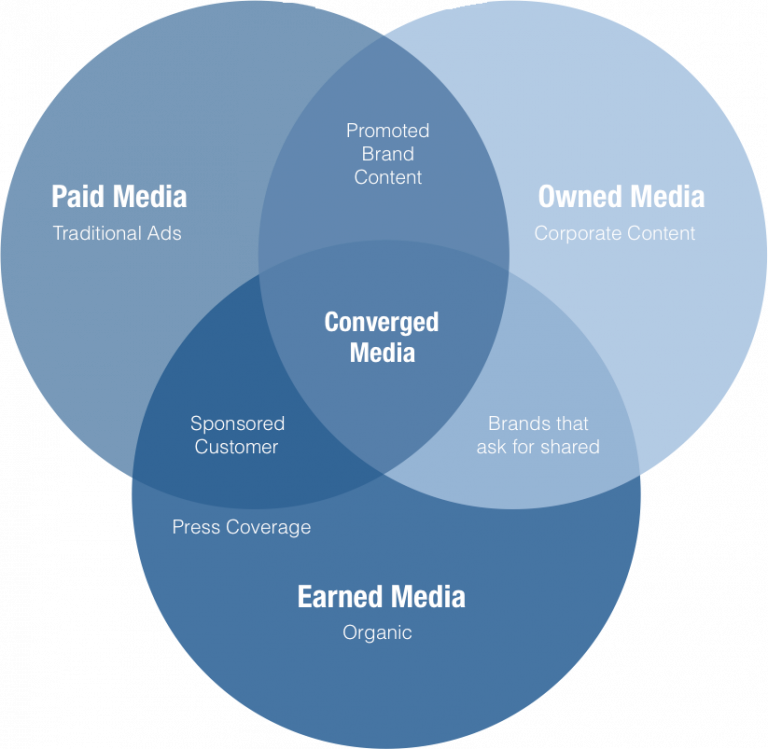Understanding Channels
Sometimes it’s not what you say, it’s how you say it
When we think of communication, we often imagine people simply talking to each other. But there are a lot of different “channels” we use to reach an audience.
Like TV channels, our channels in the VPFO are established ways you can connect to other teams in the portfolio, across UBC, or the wider public. Each channel targets different audiences in different ways to achieve different results. The channel that you choose can impact how the audience will receive the message.
Simple Channel Strategy: POEM

When communicators consider channels they often use the easy acronym P.O.E.M. which stands for Paid, Earned, and Owned Media. These three groups of channels can be used in strategic combinations to increase the reach and frequency of our messages with our target audiences.
- Paid media is advertising like a traditional ad in a newspaper, a TV ad on a channel or system, or on digital-only publications. But it can also take the form of a “boosted” or “sponsored” post on social media. Pro or Premium subscriptions to a site like LinkedIn are also a form of paid media, as is purchasing distribution of a news release on distribution services.
- Owned media is manufactured and controlled by us, such as our website, alumni magazine, videos, photographs, email lists, social media accounts or any other way we 100 per cent control our message through our own media. While we don’t pay directly to place content in owned media, don’t mistake these channels for free. Creating and maintaining these outlets takes people and systems that are not inexpensive.
- Earned media is the publicity or media coverage an event, person or item receives. Typically, this is when a reporter is dispatched in some way to cover something newsworthy and their story, either positively or negatively, reflects on your organization.
Most of the channels we’ll be looking at for the VPFO are owned and mostly internal facing. While we do purchase advertising and work with the media, these are specialized activities that are mostly handled by our internal partners, like Brand & Marketing and Media Relations, and our external partners like advertising agencies, interactive agencies, media buyers, etc.
Which one do I choose?

Many factors can influence why we choose a particular channel for the VPFO, including:
- The nature of the message
- The qualities of the channel
- Who the audience is
- Relationships and preferences
- Costs and budgets
- Urgency
It can be effective to send your message across multiple channels to encourage engagement. We’ve provided some generic information about types of common UBC channels in this section, including some pros and cons of using each.

Face-to-face
Whether it’s in-person or online, meeting face-to-face can be the best approach for communicating important information to individuals or groups.

Email is good for providing directional, important, and timely information, and is typically used by most of the UBC community.

Print offers the chance to put concrete, permanent information into a tangible format that can be distributed in a physical setting.

Websites
Different kinds of websites have different purposes, depending on who their intended audience is.

Digital signage
Digital Signage provides a powerful and highly visible opportunity to communicate messages across the university and engage with UBC audiences.

Social media
Some channels are better at broadcasting news, while others — like social media — are better at engagement and conversation.
Did you find what you were looking for?
Thanks for your response! If you'd like to share further feedback, please take our survey.
Didn’t find what you were looking for? We’d like to hear from you! Share your thoughts by taking our survey.